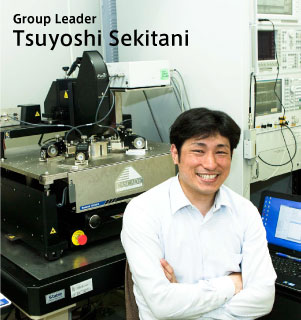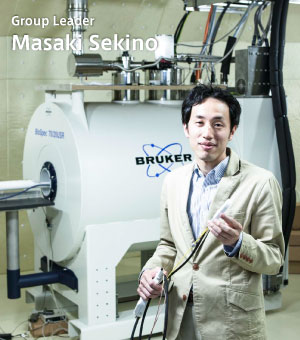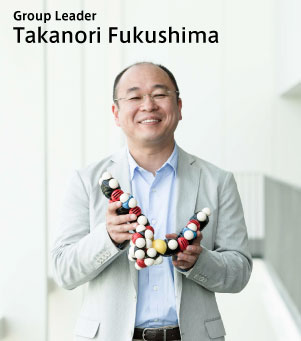Messages from Group Leaders
Bio-Printing Group
Development of “Soft” Bio-Interfaces utilizing
Ultraflexible Organic System
Mother Nature always gives us pleasant surprises when we discover the variety, unique features and the profound system of organic susbstances. Organic materials’ basic structure made of carbon atomoms is quite simple, however, they have excellent property and features. Recently, these materials are used for developing various flexible devices; such as displays, sollar cells, and sensors.
Bio-Printing Group’s main interests are on rapidly advancing applications of TFT built with molecular electronic materials.
The team especially focuses on “softness” and “diversity of electrical properties” of organic materials to be functional in a human scale and high order self-assembly molecular process is targeted as a pioneering challenge to extend nano-scale molecular level self-assembly phenomena to a meter-scale and to reproduce the functions through exploring ultimate organic phenomena. Furthermore, we aim to expand our achievements into imperceptible ultra-flexible organic systems, so as to utilize them as bio, medical, and welfare applications.


Bio-Harmonized Imaging Group
Imaging of functional dynamics in living bodies
using flexible and implantable sensors
Flexible electronic devices consisting of organic elements and substrates are expected to open up a new horizon in bioimaging. These devices can conform closely to the complex geometry of brain surface and even to the beating heart, enabling us to scan the surface of organs with a high resolution and in real time. Signal detectors of MRI and electroencephalography have sufficient sensitivities to weak biological signals when they are arrayed on the surface of organ. Implantable devices such as brain electrodes and pacemakers may be implemented on a flexible thin film, which makes the user’s life more comfortable. In addition, the use of organic materials leads to improved biocompatibility. Such exciting technologies will soon be a reality.
Bio-Harmonized Electronic Materials Group
Chemistry toward the development of
innovative materials for harmonizing electronics
with biological systems
Conventional hard electronics has achieved great development by silicon-based materials and devices. For the paradigm shift from hard to soft and flexible electronics with biologically- and environmentally-friendly features, one has to elaborate conceptually new devices using organic molecules as the main components. Because the world of molecules has infinite diversity, it is essential for this goal to design component molecules based on deep understanding of their structure and properties. By taking full advantage of cutting-edge organic, polymer, and supramolecular chemistry, the bio-ink group aims to create innovative molecular materials that enable harmonization of electronics with biological systems in particular functions.

